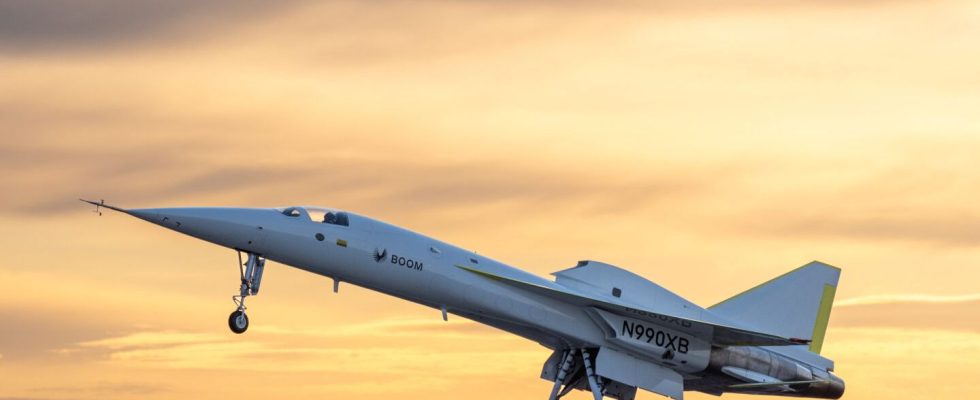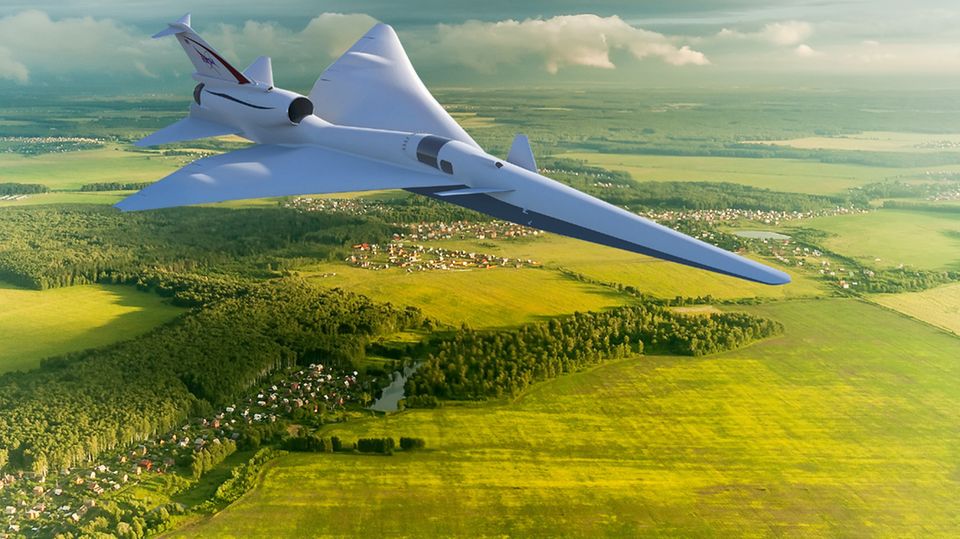Boom Supersonic
Supersonic jet XB-1 reaches important milestone – the path to the successor to Concorde has been paved
The supersonic jet XB-1 takes off on its first flight.
© Boom Ultrasonic / PR
It drags on, but it’s moving forward. When Boom Supersonic first presented the supersonic jet “Baby Boom”, it was expected that a passenger aircraft would be delivered within five years. Nothing came of it, but the company still made progress.
The US company Boom Supersonic has reached an important milestone: the test aircraft XB-1 took off for the first time from the Mojave Air & Space Port in California, says the aircraft manufacturer. This means that Boom Supersonic has come a big step closer to becoming a legitimate Concorde successor, although there is still a long way to go.
The XB-1 test jet is the basis for the development of Overture, the ambitious start-up’s passenger aircraft. “The XB-1 took off today from the same venerable airspace where the Bell “I have been looking forward to this flight since founding Boom in 2014, and it marks the most significant milestone yet in our journey to bring supersonic flight to passengers around the world.”
The test flight was a success, but the supersonic jet was not at its limit
Even though the XB-1 has met all of the test goals set by Boom Supersonic, the aircraft is still far from where the company needs it to be. On its first flight, the aircraft reached an altitude of just over two kilometers and a top speed of just 440 km/h, which is well below current passenger aircraft and even more below the speed of sound. For comparison: A Boeing 787-9 flies at 920 km/h, the sound barrier is only broken at around 1235 km/h.
Concorde successor
Boom Supersonic Overture at a glance: This is what the fast plane looks like
The legendary Concorde, which Boom Supersonic wants to inherit, traveled at an altitude of 18 kilometers and flew around 2,170 kilometers per hour. But since the plane was decommissioned, the supersonic file has been closed indefinitely – partly because of the loud bang, which is why the jets are not allowed to fly at full power in many places. Only in recent years have there been several plans to continue this chapter of aviation. In addition to Boom Supersonic, Lockheed Martin, NASA, Airbus, Hermeus and Virgin Galactic are currently working on new models. The projects share the goal of avoiding the dreaded sonic boom or at least reducing its volume.
Boom Supersonic is currently planning the first flight of the passenger aircraft for 2026, with entry into service scheduled for 2029. Things sounded different when the project was first presented in 2017. At that time, Scholl spoke of an extradition in five years (you can find out more here). Nothing came of it due to various problems.
Range is comparatively low – and little space
The Overture is planned to be 61 meters long and have a span of 32 meters. The jet should accommodate 64 to 80 passengers, and Boom Supersonic specifies the top speed as Mach 1.7, i.e. around 2,100 km/h. The advantages of this speed are obvious: for flight routes that are within the targeted range of 7,900 kilometers, you would need around half the current flight time. However, the range is relatively short: For example, a flight from Frankfurt to Atlanta would be possible, but not a journey from Frankfurt to San Francisco. For comparison: the Dreamliner currently covers 14,010 kilometers. The jet also offers over 200 seats. Traveling with supersonics will probably remain an exclusive thing for the time being – and will probably start with potential passengers where the expensive Concorde was.
Nevertheless, the goal that has now been achieved arouses desire. “I have been waiting for an environmentally friendly successor to the Concorde for over 20 years and the first flight of the “The first flight of the supersonic demonstrator
According to the company, there are currently around 130 orders for the Overture, including from American Airlines, United and Japan Airlines.



